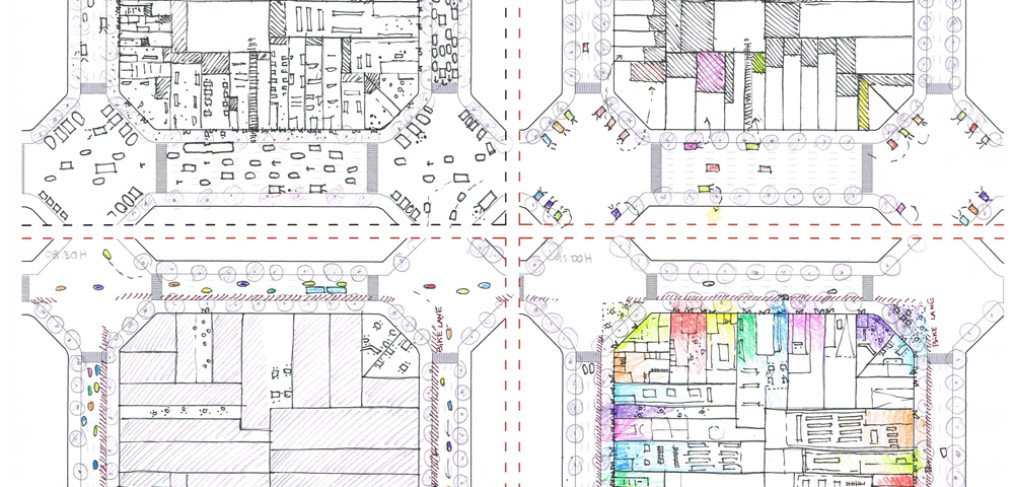
moving people – moving things
The percentage of urban population is growing at very fast rate and, therefore, the built environment is also expanding. For this reason, cities management is becoming a central issue in our society priorities.
Mobility studies and their practical applications can greatly influence cities development from many points of view, such as social dynamics, the potential of economic growth or even the environment, a general concern nowadays.
Lately, many different interventions, efforts and policies have been focused on this subject. Projects related with urban mobility have been carried on, such as developing new transport systems, incorporating bicycle lanes or even revisiting the concept of transportation hub. In addition, a great emphasis has been given to the development of social concern towards the way we move and the effects of transportation in the environment. A great campaign has been triggered with a focus on reducing the use of private car and enhancing not only public transportation but also “mobilité douce” such as walking or using bikes.
However, the focus of all campaigns has been given to people transportation, maybe forgetting that humans are not the only ones that move, currently. Delocalized economies and globalized society have enhanced the movement of goods, including food, clothes, pieces of devices…etc. By buying on internet we might get the impression that we reduce our trips, but the good still need to come to us in one way or another. The explosive growth of business-to-costumer electronic business activities generates a great number of deliveries [1]. In addition, to reduce costs the production of a final good is usually split in several countries and pieces need to travel around the world to finally be assembled together in one place before being shipped to the consumer destination. On top of that, consumer society obviously involves more goods being implemented on the freight transport network. Therefore, the transportation of goods constitutes an extremely important activity taking place in urban areas forming a vital link between suppliers and consumers [1].
Focusing on the effect this situation has in urban centers, we realize that although we can be reducing the space occupied by private cars in cities; this room is being taken by freight transportation very fast. Freight vehicles, carrying consumer goods, building materials, waste products, postal mail and others, move on the same circulation arteries used by private and public vehicles that transport people [1,2]. These flows occupy one fourth of the street traffic of a typical city [2]. Consequently, the car related environmental problems we had originally are not disappearing, only being transformed into vans. On top of that, freight transport carries with it the loading and unloading, conditioning, packaging and storing as part of the system, which also demands a great fraction of urban space [2].
On top of that, the already significant volume of freight vehicles moving within city limits is growing and it is expecting to continue growing at fast rate [1]. There are several factors that contribute to this growth. Firstly, the rise of land value in city centers has brought a new strategy for most of shops: minimizing their storage surface and having other greater shops or storehouses in the metropolitan areas with several supplying trips a day to cover the costumers demand. In other words, current production and distribution practices based on low inventories and timely deliveries plus the just-in-time paradigm generates a great volume of personal deliveries [1]. In addition, the fact that most of goods transport is individually managed by private companies or business brings as a consequence a lack of general management and efficiency in urban freight transportation. Laetita Dablanc states that goods urban mobility presents three main characteristics: First, goods movements are largely indifferent to the internal structure of cities. Second, urban policies regarding freight mobility are inefficient. And third, the provision of appropriate logistic services is slow in emerging despite growing needs in urban areas [2].
This situation involves several problems and risks. For instance, the increase of vehicle-related problems, such as carbon emissions, traffic congestion, energy consumption andthat are not searching regulations or solutions like the case of private cars. Also, the security problems related with a high number of vans present in the streets. Their presence reduces general visibility and, as a consequence, the driving security for all vehicles, especially the most vulnerable, such as motorcycles or bicycles. Their irregular way of driving, related with the frequency of stops, also disturbs the transit fluidity, particularly for buses, which lane is often invaded by the loading and unloading of goods. Moreover, pedestrian security is also challenged when freight transport invades their area while parking.
Nowadays, transportation research is starting to see this issue as a problematic and covering it in different studies, articles and investigations. Nevertheless, traditionally it is a subject not completely addressed by public authorities. Their interventions are generally limited tothe regulation on parking, street access, and hours of operation [1]. Therefore, freight transportation issues at city level are still not well understood nor quantified and there is no methodology aimed specifically at the analysis and planning of freight movements within the city [1]. Fortunately, as traffic conditions in cities all around the world are becoming more unsustainable, the need of analyzing the subject is becoming widely accepted. Intelligent Transportation Systems (ITS) are being introduced with the aim of developing new management models and city distribution centers (or logistic platforms) are already being launched in some European cities. One of the main conclusions extracted from studies and practical applications is that co-operation principles are key to deliver working solutions. [1]
However, the subject is still being addressed mostly in scientific environments and the concern has not reached the general public. It is necessary that urban inhabitants start to understand that freight transport is an important issue in the current cities mobility panorama to be able to reach a social conscience similar to the one being implemented for people’s mobility. Consequently, efforts should be focused not only in developing better models to manage freight transport but also in the diffusion of a public awareness of the subject.
[1] Crainic, T. G. ; Ricciardi, N. ; Storchi. G. Advanced Freight Transportation systems for congested urban areas. [2] Dablanc, L. Goods transport in large Eurpean cities: Difficult to organize, difficult to modernize. [3] Muñuzuri, J. ; Larrañeta, J. ; Onieva, L. ; Cortés, P. Solutions applicable by local administrations for urban logistics improvement.
AUTHOR: Glòria Serra Coch










